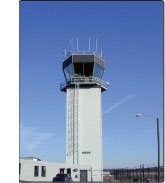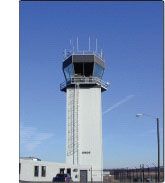It was a nice day for flying, even though a cold front was blowing in from the west and spawning a few showers along my route. I was level at 8000 feet, on an IFR flight plan, and about halfway into a planned 90-minute flight to my family home in Georgia. Despite an occasional slight deviation for buildups, I was proceeding more or less directly to my destination and monitoring the ATC chatter. The traffic level seemed fairly normal for en route airspace, the airplane was humming along nicely and all was right with the world. Thats when the controller called with clearance for a descent to 4000 feet “for traffic.” At that time, I was a good 90 nm or so from my destination. The cloud bases were around that height and the winds would have forced me to take a groundspeed hit. Also, Im flying a single and like to stay as high as I can as long as I can. Plus, going down to 4000 would put me in what I often call “Indian territory,” where the VFR Cherokees are lurking. I responded to the effect that I really didnt want to do that, hinted that Id be open to another solution and asked, “Wheres the traffic?” The response? “Thats none of your business.” Excuse me? Of course, it most certainly is my business, if for no other reason than a mid-air collision would ruin my whole day. My idea, however, was to obtain information on a potential traffic conflict with the goal of coming up with a solution that would meet my operational needs and the controllers requirement to keep some airspace between us. Feel free to consider mine an antiquated concept of how pilots and controllers should work together to make each others role easier and more professional, but there it is. Maybe Ive reached a cranky stage in life, but I sincerely dont have to take that nonsense from ATC, or anyone else. Without allowing the controller to retract that response, I simply cancelled IFR. The controller, seemingly acknowledging a foul had been committed, offered flight following on the same squawk. I accepted and began a slow climb to 8500 feet, a VFR altitude. Soon, I was handed off to another controller but not before getting the telephone number for the facilitys Quality Assurance (QA) desk and making a few notes of my own, including the ATC facility and frequency I was working, along with the time of day and my position. It wasnt until I had been handed off to the next ATC facility that the traffic became anything close to a factor. It was an IFR Baron, level at 6000 feet, crossing right to left. Now VFR at 8500, I had no trouble picking out the twin and easily maintaining separation. Also in the mix was an active Military Operations Area (MOA) I would be entering soon. A few days later when I was back home and had the time to tilt at this windmill, I began what I hope will have been a fruitful odyssey through the FAAs ATC bureaucracy. Soon I was speaking with the QA desk, gave the facility my N-number, date/time and frequency, and stated I wanted to file a formal complaint about my handling. I wasnt asked, nor did I volunteer, the specifics of why I wanted to file a complaint. All my information was confirmed and I obtained additional information on how the complaint process would work and how I could go about obtaining the ATC tapes and a transcript. I was assured the facility would pull the tapes, review them and get back to me. Sure enough, the next day I received an extremely apologetic phone call from the QA manager, who stated “we definitely have a performance issue” with the controller who was handling me. The manager went further to state my handling was “truly unacceptable” and that the facility would respond more fully to my complaint and work with the controller. Later in the week, I received a call from the facilitys operations manager again apologizing for my handling, acknowledging there were “performance issues,” and outlining the overall traffic and airspace situation at the time as well as their planned remedial actions. In essence, the controller who handled me would receive additional computer-based instruction on phraseology and be presented with a letter noting “unacceptable performance” that would go into the controllers personnel file. Throughout my interaction with the facility, I was treated professionally and was assured my experience was an anomaly. I agree-Ive used that facility for many flights over decades and have always had courteous, professional, safe handling. Which, in my mind, made it imperative that I file a complaint. But theres an overall issue here that isnt anomalous. At the end of the day, I really dont care about the specific words used in response to my traffic query. This is about the dismissive attitude with which I was greeted: My operational concerns were of no interest to the controller. My experience over the last few years tells me this kind of handling is increasing. Rather than take a little extra effort to come up with a plan that doesnt put a single-engine airplane down in the weeds multiple miles from its destination, or work at blending certain kinds of traffic with other kinds, its easier for ATC to just shuffle me and my airplane off to the side to get us out of the way. Its a complicated issue involving workload, airspace configuration, traffic levels and attitude. But mostly, I believe it comes down to there being two different ATC systems: One for the airlines and bizjets, and another for everyone else. It most assuredly is my business where potential traffic is and how the ATC system asks me to fly my airplane. I consider myself part of the solution, not the “problem” I apparently am to many controllers. This kind of nonsense is not what I signed up for. -Jeb Burnside





